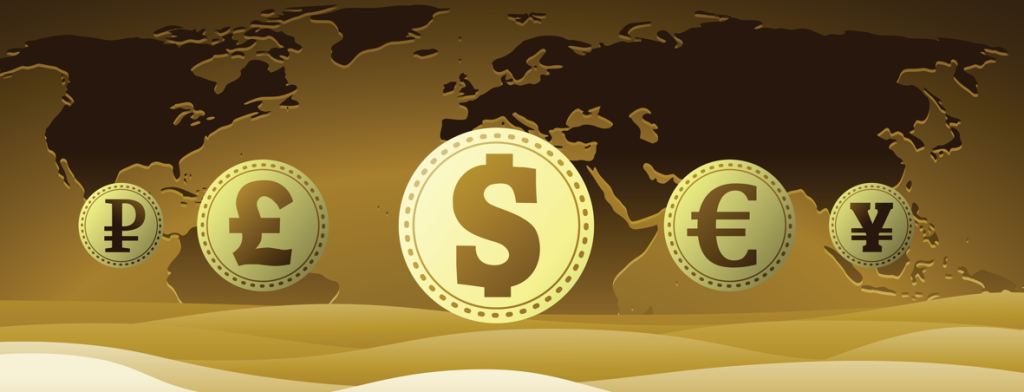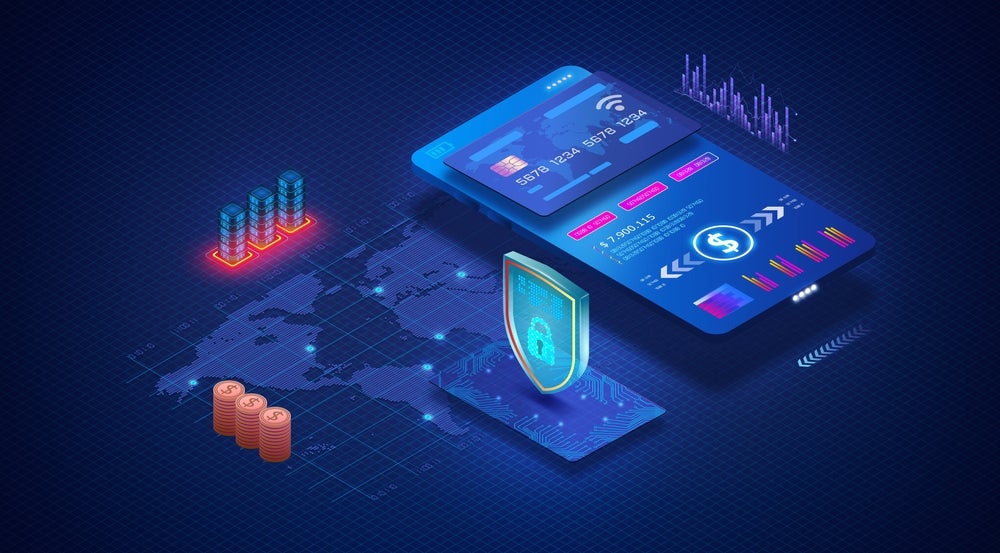The payments industry is full
of good ideas, but taking those ideas into the real world can often
be difficult, particularly when implementing those innovations
means significant changes to existing infrastructure. So, asks Jane
Cooper, could mobile payments innovation drive traditional banking
infrastructure forward?
 If an idea is so
If an idea is so
far ‘out of the box’ it will take a lot of work for it to catch on.
Likewise, any payments innovation will struggle to gain widespread
traction if it does not link to existing infrastructure, which
leads some industry observers to question how innovative payments
can be.
ATMs, POS terminals, the shape of
wallets and even the size of business cards are all based around
the payment card.
Moving away from the card shape to
other forms, such as the watch or key fob, have yet to take off on
a wide scale. And while innovations like implanting a payment chip
in the hand are already technically possible, such ideas have
remained the preserve of small niche players who lack the means to
introduce their innovations to the mainstream consumer.
For large issuing banks, who do
have the clout to roll out new payment forms to the mass market,
having an innovative and unique product is not enough; there has to
be a strong business case for overhauling the existing systems they
have already invested so heavily in.
How well do you really know your competitors?
Access the most comprehensive Company Profiles on the market, powered by GlobalData. Save hours of research. Gain competitive edge.

Thank you!
Your download email will arrive shortly
Not ready to buy yet? Download a free sample
We are confident about the unique quality of our Company Profiles. However, we want you to make the most beneficial decision for your business, so we offer a free sample that you can download by submitting the below form
By GlobalDataMurdo Munro, director of Paytekh, a
company that develops payment products and services, says that
innovation has been limited because of the investment necessary to
establish the acceptance network for a new payment form.
“It is not because a lack of
appetite,” argues Munro, who adds that new payment forms – such as
watches or key fobs – have not taken off because there are not many
terminals in place to accept such payments.
For a completely new acceptance
network to be established, there has to be a compelling reason to
introduce such a change.
“There has not been enough consumer
benefit to change the infrastructure,” says Paul Rasori, VeriFone’s
senior vice-president of marketing.
He adds that for an innovation to
be worth its investment, it has to bring an additional value and
another purpose.
“It has to do more than a card,”
Rasori says, adding that it has to give the consumer a benefit that
goes beyond payments.
Near field communication (NFC)
technology on mobile phones does just that. For consumers that have
a mobile device with NFC capability, the payment process is the
same as tapping a contactless card against the reader, except that
a card is no longer necessary.
The potential of the smartphone
also means that the device can do a lot more than just being tapped
against the terminal. For example, a merchant can generate
vouchers, create direct marketing offers, or send the receipt
directly to the customer via the phone.
The current infrastructure is worth
upgrading for this kind of technology because it goes a lot further
than other contactless form factors, such as the card, contactless
sticker, watch or key fob, which only enables one-way communication
from the customer to the retailer for payment.
“The technology allows the retailer
to interact with the consumer,” says Rasori.
There are many types of NFC
technology, points out William Rossiter, Hypercom’s vice-president
of marketing. With this type of innovation, the mobile device is
emulating the card but it also has the potential for other
applications.
So the payments industry can move
beyond its reliance on cards even though the new technology is
still card-based. Rossiter points out that the innovation and the
infrastructure for contactless supports developments in NFC. “They
are very much inter-related,” he says.
There does not necessarily have to
be a progression through the evolutionary stages of payment card,
contactless card, other contactless form factors, then NFC mobile.
Once the right terminals are in place, any of these payments could
be accepted. For now it makes sense to develop contactless readers
for cards because this is the format consumers are already
using.
Mobile
movement
 While there are
While there are
not many terminals out there, the cardholder who cannot use the
contactless function can still use their plastic as a regular
payment card at the point of sale. Once there are many contactless
terminals in place, says Munro, then it would make sense for the
other innovations – such as key fobs, watches, or mobile devices –
to follow.
There still remains the problem of
whether the mobile payment devices or the acceptance terminals
should come first.
But what could give the NFC
payments a boost is if the NFC-enabled handsets are put into the
marketplace, spurring consumers to want to use their phones for
such payments.
Some argue the transformation to
the new form of payment is already occurring and is happening much
sooner than many industry observers had anticipated. It could also
happen on a large scale in the US, even though the market has been
considered to be behind the curve with NFC mobile payments compared
to countries like Japan.
The driving force for the change is
not coming from the financial institutions, but from other parties
that have the ability to innovate, but also the size and scale to
reach the mass consumer.
Industry observers comment that
within the next two years NFC-enabled smartphones could be widely
used by the general public at the point of sale. The NFC push could
come from companies such as Google, Apple and Orange, who are
already making their move in terms of payments innovation.
In November 2010, Google announced
it was incorporating NFC into the next version of its Android
phone, and now the NFC-enabled Nexus S is already on sale. The
phone was developed with Samsung Electronics and the device holds
an NFC chip and software developed by NXP Semiconductors.
At the time of the announcement,
Ruediger Stroh, executive vice-president and general manager of NXP
Semiconductors’ identification business said: “Google’s adoption of
the technology will be a catalyst for the industry to drive the
further adoption of NFC at both the handset and application
levels.
“Open source development
environments will push the boundaries of innovation and drive
revolutionary new services and applications for mobile
devices.”
One month later, in December 2010,
Orange announced it would be rolling out NFC on its handsets
enabling its broad customer base in Europe to be introduced to the
payments technology. The mobile operator announced it would begin
to put the NFC-enabled phones into the market from the second
quarter of 2011 and aims to sell 500,000 handsets by the end of the
year.
Reaching tipping
point?
 With payment
With payment
devices being put into the hands of consumers by such large
companies, it is possible this could give the non-card
infrastructure the boost it needs to get off the ground.
It widely speculated what the
intentions of companies such as Google are in the payments space.
The NFC-enabled devices could be used just for card-emulation so
that the phones are used at the retailer’s POS terminal to pay for
goods. It is also possible the company has plans to establish
peer-to-peer payments or develop an online payment network.
With companies such as Google being
involved in the payments world, innovation is no longer restricted
to financial institutions. Rossiter points out that companies such
as Google have a different role to play in the payments industry
because their main objective is not to make money from the
transactions themselves.
Such a service means they are able
to build knowledge of their customer base – of those making the NFC
payments. By not being focused purely on the business case for the
payments infrastructure on its own, Rossiter points out, it gives
the company flexibility when it comes to innovation and developing
the payment forms.
Another recent development that
could boost payments innovation away from cards is the formation of
Isis in the US, which was announced in November 2010.
As a joint venture between the
major wireless service providers in the US – AT&T Mobility,
T-Mobile USA and Verizon Wireless – the NFC-based venture has the
potential to reach its customer base of 200 million.
The company describes its
innovation as eliminating the need for cards and a means for the
customer’s wallet to be combined with the phone. The scheme has
already signed up Barclaycard US, which is expected to be the first
issuer of the scheme, and it is also working with Discover
Financial Service’s network to establish the new acceptance
infrastructure.
At the time of its launch, Isis
chief executive officer Michael Abbott, said: “We believe the
venture will have the scope and scale necessary to introduce mobile
commerce on a broad basis. “In the beginning, we intend to fully
utilise Discover’s national payment infrastructure as well as
Barclaycard’s expertise in contactless and mobile payments.
“Moving forward, Isis will be
available to all interested merchants, banks and mobile carriers,”
Abbott added.
With developments like these in the
marketplace, it means that terminal manufacturers such as VeriFone
and Hypercom are developing products for companies that are not
financial institutions.
Many financial institutions are
also likely to go into partnership with mobile networks to move
away from cards-based payments.
Issuing banks have long been
developing applications for the smartphone that add to their
financial services offering, whether it is sending alerts to the
phone, or enabling the customer to check the account balance. The
mobile NFC offering is likely to be offered as a proposition that
can be offered as an alternative to a credit card, for example.
For the smartphone-using customer,
the NFC device could be used in lieu of the card, but still
accesses the same credit card account. For other customers, who are
not so smartphone savvy, the issuer could continue to offer the
same card service until NFC becomes adopted more widely.
As yet it is unknown how quickly,
and how widely, such innovations that move away from the cards
format will take off. However, industry observers are hopeful that
the new infrastructure is on its way because the NFC-enabled
handsets are already being sold.
The terminals are also being
developed so they are capable of reading and accepting all kinds of
payments. The hardware has already been developed for such
terminals, which use the traditional forms of payments – such as
credit and debit cards – and their security specifications and
certifications as a base.
Then, on top of that, applications
can be loaded to accept the new forms of payments. With the iPhone
for example, it is effectively a mini computer that is controlled
by the user, who can download the payment application they
want.
The corresponding software then
needs to be loaded onto the terminals so that the retailer has the
corresponding application on the POS device to accept the
payment.
Many in the industry feel that the
widespread introduction of such innovation is inevitable because of
the numerous benefits that it can bring to the consumer compared to
the card format. It is possible this type of innovation will gain
traction as an alternative to the card infrastructure because it
goes one step further.
As Paytekh’s Munro points out, the smartphones not only offer an
alternative payment form to cards in the physical world, but they
can also be used as the basis for making payments in the virtual
world as well.







